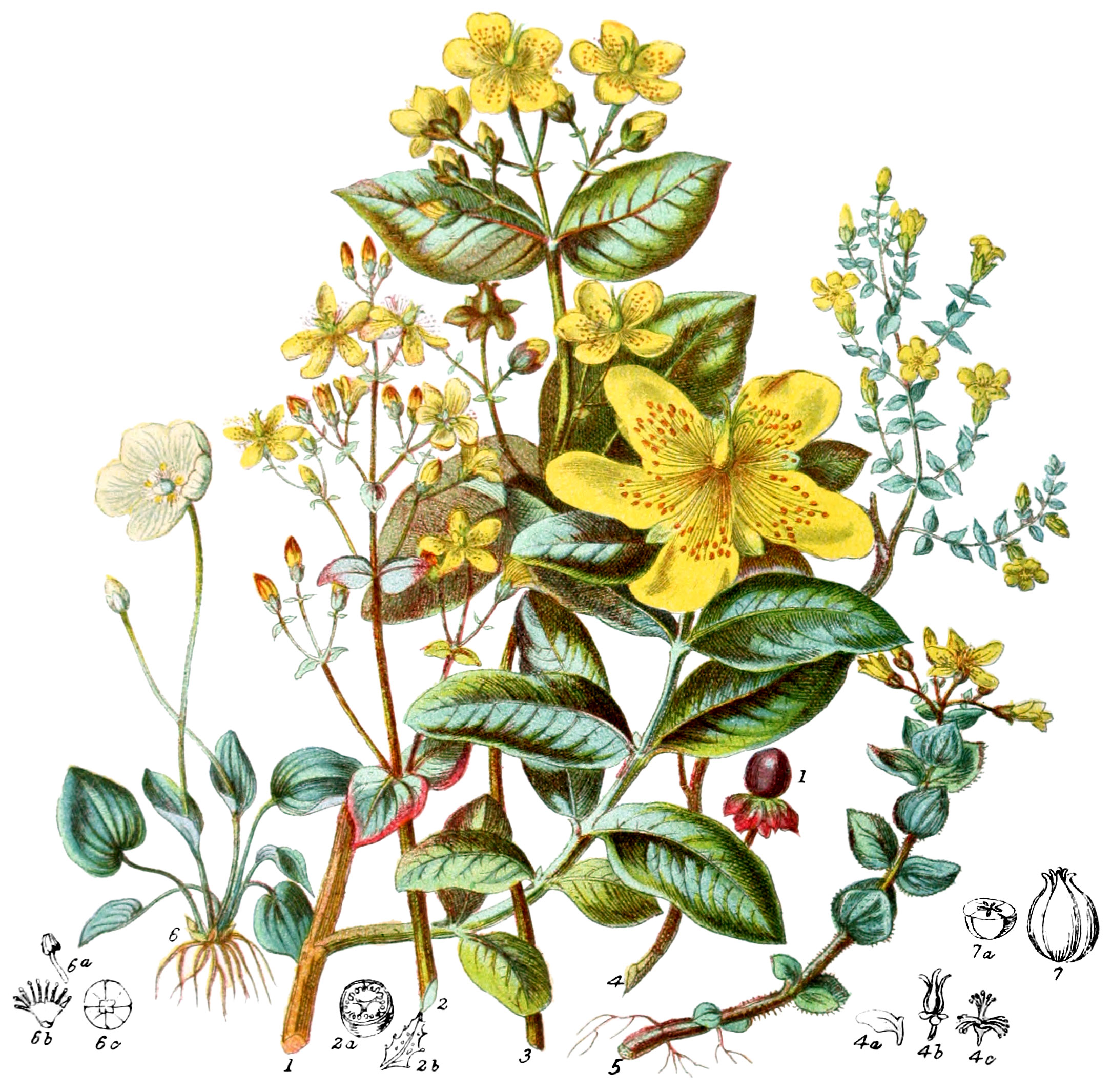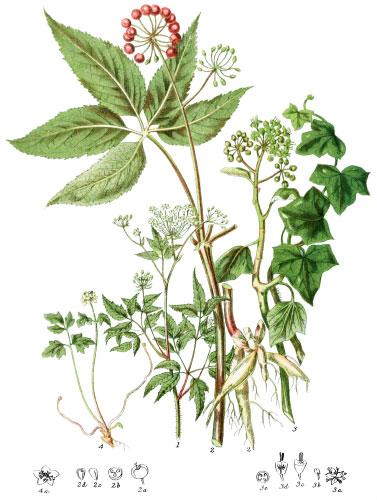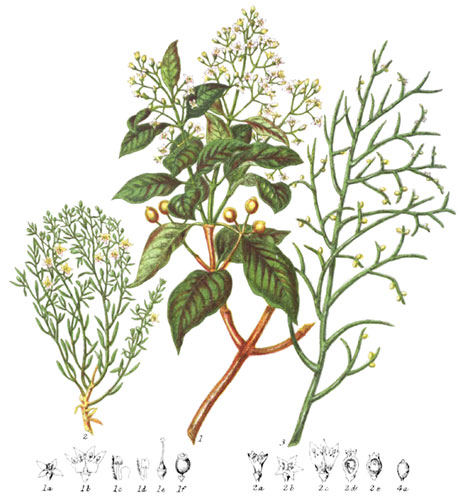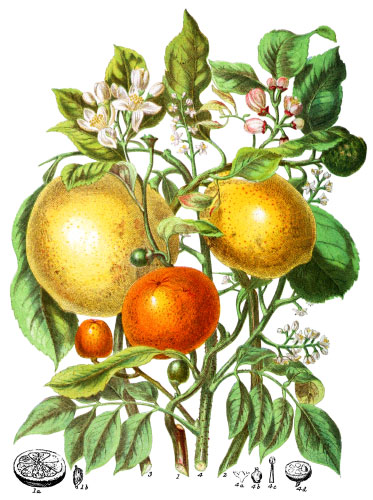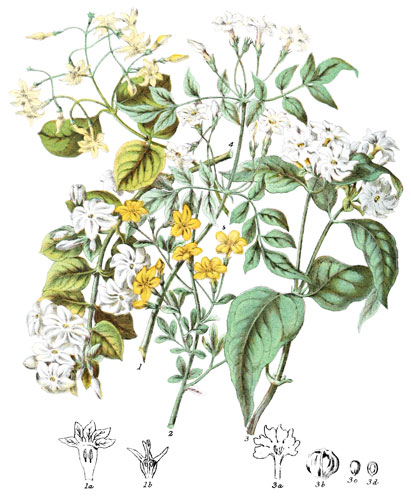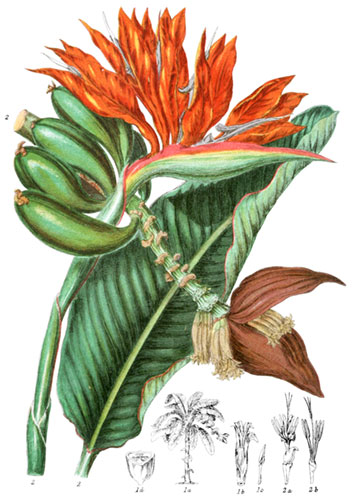Key characteristics
Trees, shrubs, herbaceous and annual plants, having a resinous juice, and often with angular branches. The leaves are opposite, entire, without stipules, occasionally alternate, sometimes notched at the edges, usually impressed with transparent dots, and bordered with dark glands. In almost every instance, the flowers are yellow, the rest red or white; the form of inflorescence is various, though the flowers are regular. The calyx has four or five sepals free from the ovary, two exterior, three within, either separate or partially united. The petals are of the same number as the sepals, unequal sided, twisted spirally in the bud, sometimes bordered with black dots, and often having a fleshy scale or hollow at their base. The stamens are numerous, growing from the base of the pistil, either distinct or united into one, or generally many sets; the filaments are slender, the anthers two-celled, opening lengthwise, frequently surrounded by a gland. Small fleshy glands are in some species placed between the sets of stamens as in Parnassia and others. The carpels are three or five, partly united around an axis, the styles are of the same number, usually distinct, but occasionally cohering to the base. The stigmas are capitate or truncate, rarely two-lobed. The fruit is sometimes one-celled, but seeds are minute, usually tapering at the point.
The unequal sided petals, and dark glands upon their edges, and the stamens united in sets, are the chief distinguishing points of recognition in this Order.
An essential oil is contained in the glands of Hypericum resembling those of the Orange tribe; a yellow juice in other parts of the plant, as well as some points of structure, connect this tribe with Clusiaceæ.
Select plants in this order
Not all plants listed are illustrated and not all plants illustrated are listed.
- The different species of Hypericum are chiefly small undershrubs; a few which grow in the woods and hedges of England and other countries of Europe to are herbaceous. Some are of much beauty and delicacy, the border of round glands giving a peculiar ornament to the delicate flowers.
- Hypericum calycinum (1) is a well-known evergreen plant in shrubberies, where it spreads over the ground, flourishing well under the shade of trees, and producing abundantly its bright golden flowers during the summer.
- H. pulchrum (2) is an elegant species, frequent in the woods or healthy places, on a clay soil.
- H. performatum, a British species, is also a native of France and Germany; it was formerly valued by the peasants as a charm against storms and other dangers. In Scotland it was considered a preservative against witchcraft; and if gathered on the even of St. John, was supposed by the imaginative to be endued with peculiar power. its more real properties consist in dyeing wood of a yellow colour, and in the flowers imparting a fine purple hue to spirits and oil; it was also used as a healing balsam in the olden time. This is one of our British plants which is also found on the Himalaya.
- The bruised seed-vessels and the leaves of Androsæmum officinale (3) have long been reputed beneficial for slight wounds in France, where the plant is still called Toute-saine, whence the common English name Tutsan was derived. The fruit of this species is pulpy, and has the appearance of a berry. This is almost entirely an European species, but has been seen in Greece.
- Parnassia palustris (6), said to have been discovered on Mount Parnassus, is one of the most delicately beautiful of our marsh plants, and does not appear to be surpassed by any other species; that of Carolina has a larger flower, but is of a greener colour, and the nectaries are crowned by only three glands each.
- Elodea has also bundles of glands between the stamens.
- Elodea virginica is a medicinal plant of the United States.
- Vismia guianensis (7) yields a copious yellow gum, known as gummy gutta, Vismia micrantha and V. laccifera of Brazil contain a gum resin similar to gamboge.
- The leaves of Hypericum laxiusculum are supposed to afford a remedy against the bite of serpents in Brazil.
- Cratoxylon is also used medicinally.
- Ascyrum is a North American genus of evergreen shrubs.
Locations
The plants of this Tribe are very widely spread over the earth, on mountains and in valleys, in meadows and on heaths, marshes and dry plains. North America possesses the largest number of species; in South America about half the number have been found; to Asia belong several species of arborescent shrubs, growing in the south of India, and others are scattered over the Himalaya.
Legend
- Hypericum calycinum, Large-flowered St. John’s Wort. Ireland.
- Hypericum pulchrum, Upright St. John’s Wort. England.
- Cross section of Seed-vessel.
- Sepal of Calyx, magnified.
- Androsæmum officianale, Tutsan. England.
- Pulpy Capsule.*
- Hypericum ægyptiacum, Egyptian St. John’s Wort. Egypt.
- Petal.
- Pistils.
- Stamen.
- Hypericum elodes, Marsh St. John’s Wort. England.
- Parnassia palustris, Grass of Parnassus. England.
- Stamen.
- Nectary.
- Ovary.
- Capsule of Vismia Guianensis.
- Cross-section of Capsule.
*3a was not pictured in the original illustration.
Explore more
Posters
Decorate your walls with colorful detailed posters based on Elizabeth Twining’s beautiful two-volume set from 1868.
Puzzles
Challenge yourself or someone else to assemble a puzzle of all 160 botanical illustrations.
